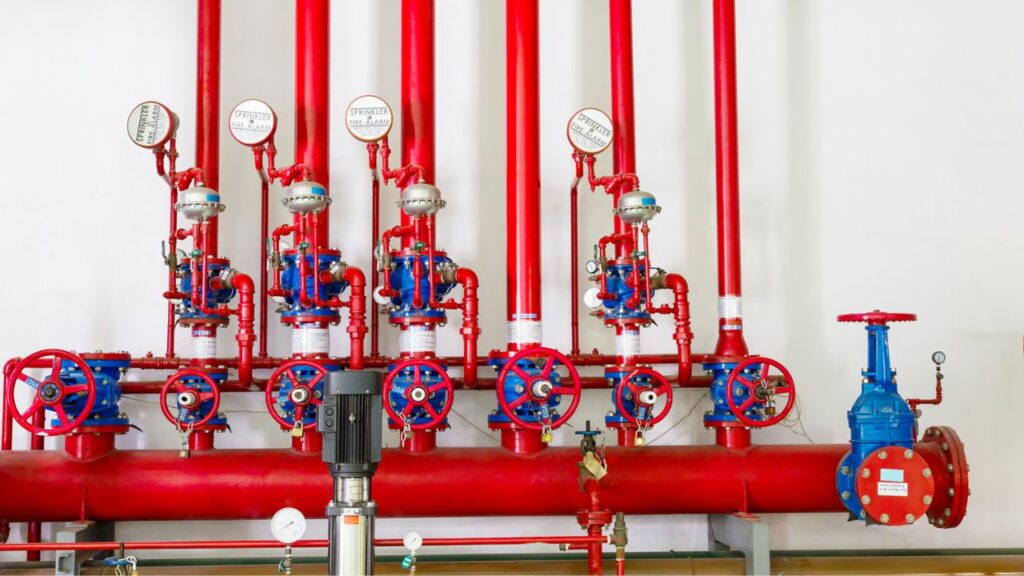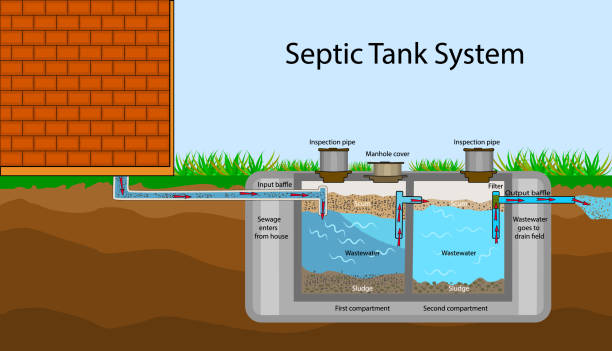Right here on the next paragraphs you can get more amazing facts on the subject of Understanding Your Home's Plumbing Anatomy.

Understanding how your home's plumbing system works is important for each house owner. From supplying tidy water for drinking, cooking, and bathing to safely eliminating wastewater, a well-kept pipes system is vital for your family members's wellness and convenience. In this comprehensive guide, we'll explore the elaborate network that makes up your home's plumbing and offer suggestions on maintenance, upgrades, and dealing with typical problems.
Introduction
Your home's plumbing system is more than just a network of pipes; it's a complicated system that ensures you have access to clean water and efficient wastewater removal. Knowing its components and how they work together can aid you protect against pricey fixings and make certain every little thing runs smoothly.
Fundamental Components of a Plumbing System
Pipelines and Tubes
At the heart of your pipes system are the pipelines and tubing that carry water throughout your home. These can be made of various products such as copper, PVC, or PEX, each with its benefits in regards to sturdiness and cost-effectiveness.
Components: Sinks, Toilets, Showers, and so on.
Components like sinks, toilets, showers, and bathtubs are where water is made use of in your house. Comprehending exactly how these fixtures connect to the pipes system assists in identifying problems and planning upgrades.
Shutoffs and Shut-off Factors
Valves control the circulation of water in your pipes system. Shut-off valves are crucial throughout emergency situations or when you need to make repairs, permitting you to separate parts of the system without interfering with water circulation to the whole home.
Water System System
Main Water Line
The main water line attaches your home to the local supply of water or a private well. It's where water enters your home and is dispersed to different fixtures.
Water Meter and Stress Regulator
The water meter measures your water use, while a pressure regulatory authority makes sure that water flows at a secure stress throughout your home's plumbing system, protecting against damage to pipelines and fixtures.
Cold Water vs. Hot Water Lines
Understanding the difference in between cold water lines, which supply water directly from the major, and hot water lines, which lug heated water from the hot water heater, assists in troubleshooting and preparing for upgrades.
Drainage System
Drain Pipes Pipeline and Traps
Drain pipelines carry wastewater far from sinks, showers, and toilets to the drain or septic tank. Catches avoid sewage system gases from entering your home and also catch debris that can cause obstructions.
Ventilation Pipelines
Ventilation pipelines permit air into the drainage system, preventing suction that can slow down drainage and create traps to vacant. Appropriate ventilation is necessary for maintaining the stability of your plumbing system.
Significance of Correct Drainage
Making certain proper drain stops back-ups and water damages. Frequently cleansing drains and preserving catches can prevent expensive fixings and extend the life of your pipes system.
Water Furnace
Sorts Of Water Heaters
Hot water heater can be tankless or typical tank-style. Tankless heaters warm water as needed, while tanks store heated water for instant usage.
Updating Your Plumbing System
Reasons for Updating
Updating to water-efficient fixtures or replacing old pipes can boost water top quality, reduce water expenses, and boost the worth of your home.
Modern Plumbing Technologies and Their Benefits
Check out innovations like wise leakage detectors, water-saving commodes, and energy-efficient water heaters that can save money and minimize ecological influence.
Price Considerations and ROI
Calculate the in advance expenses versus lasting financial savings when considering plumbing upgrades. Numerous upgrades spend for themselves via decreased utility expenses and less repairs.
Exactly How Water Heaters Link to the Pipes System
Recognizing just how hot water heater connect to both the cold water supply and hot water distribution lines helps in diagnosing issues like insufficient hot water or leaks.
Maintenance Tips for Water Heaters
Routinely flushing your water heater to eliminate sediment, checking the temperature setups, and checking for leakages can expand its life-span and improve energy effectiveness.
Typical Pipes Concerns
Leakages and Their Reasons
Leaks can happen due to aging pipes, loosened installations, or high water stress. Attending to leakages quickly avoids water damage and mold development.
Obstructions and Clogs
Blockages in drains and toilets are frequently caused by purging non-flushable things or an accumulation of grease and hair. Using drainpipe displays and bearing in mind what drops your drains pipes can protect against obstructions.
Indicators of Pipes Troubles to Expect
Low tide stress, sluggish drains, foul odors, or unusually high water costs are indications of prospective plumbing troubles that must be dealt with immediately.
Plumbing Upkeep Tips
Routine Evaluations and Checks
Set up yearly plumbing inspections to capture problems early. Look for indicators of leaks, corrosion, or mineral build-up in faucets and showerheads.
DIY Upkeep Tasks
Easy jobs like cleansing faucet aerators, checking for toilet leakages using color tablets, or insulating subjected pipes in cool climates can prevent significant plumbing concerns.
When to Call a Professional Plumber
Know when a pipes issue needs professional experience. Attempting intricate repair work without correct knowledge can bring about more damages and higher repair work costs.
Tips for Lowering Water Usage
Simple behaviors like taking care of leaks without delay, taking shorter showers, and running complete lots of laundry and recipes can conserve water and reduced your energy expenses.
Eco-Friendly Pipes Options
Consider lasting pipes materials like bamboo for floor covering, which is durable and eco-friendly, or recycled glass for counter tops.
Emergency situation Preparedness
Steps to Take Throughout a Plumbing Emergency
Know where your shut-off shutoffs are located and exactly how to switch off the water supply in case of a ruptured pipeline or major leak.
Relevance of Having Emergency Contacts Helpful
Keep get in touch with information for regional plumbers or emergency situation services easily offered for fast response during a pipes situation.
Environmental Impact and Conservation
Water-Saving Components and Devices
Installing low-flow faucets, showerheads, and bathrooms can dramatically reduce water usage without compromising efficiency.
Do It Yourself Emergency Situation Fixes (When Appropriate).
Temporary fixes like utilizing air duct tape to patch a dripping pipeline or placing a container under a trickling tap can decrease damage until a professional plumbing technician shows up.
Verdict.
Recognizing the makeup of your home's pipes system empowers you to maintain it efficiently, saving time and money on repair work. By complying with routine upkeep regimens and remaining notified regarding modern-day pipes modern technologies, you can guarantee your pipes system runs effectively for several years to find.
HOW YOUR PLUMBING SYSTEM WORKS
Which Pipes Do What?
Blue lines = fresh water supply entering the building Red lines = hot water supply entering the building Grey lines = pipes carrying waste away from the building and venting pipes carrying gases away from the building (through the roof) YOUR MAIN PLUMBING SYSTEMS
There are two main plumbing systems that support your home s basic plumbing needs one that brings clean water into your home, and one that sends dirty water away from your home. Connected to the toilet, bath, shower, and other faucets in your home, these two systems keep your water flowing in the right directions.
ACCESSING FRESH WATER
Fresh and clean water is brought into your home through the main water supply line . Filtered through one pipe, this water is pressured to flow into the various fixtures in your home at any given time.
This water can be sourced from a well located on your property, a pond or river (mostly cottages), or, as in most cases, from the city s municipal water treatment centre. However, it is important to note that water that is untreated, such as the water siphoned from ponds or rivers, may not be safe to drink. Personal water supplies always need to be treated for hardness and contaminants before consumed.
MUNICIPAL WATER SUPPLIES
Improve taste and odour Remove sediment Eliminate hardness Reduce chlorine COLD WATER SUPPLY VS. HOT WATER SUPPLY
Cold water flows into your home or building through the service line, which then distributes hot or cold water to your fixtures. This line is most commonly run through a central column that runs floor to floor. Hot water runs in short and straight pipes as the longer the pipeline, the more heat that will be lost in the transfer. Having shorter pipes also allows residents to access hot water more quickly.
WASTE WATER SYSTEM
Your wastewater system is divided into two parts pipes that send wastewater away from your home and venting pipes that send sewer gas away from your home. Sewage water travels through pipes that flush the water and waste towards local sewers that are operated and managed by your city or town. Most sewer systems rely on gravity to move the wastewater to where it needs to go.
The further away from your toilet or sink, the larger wastewater pipes become. This allows for waste to be disposed of from various parts of your home or business at once without pipe blockages. The angle and flow of these pipes are also essential for keeping your waste pipes clear of build up.
https://harrisplumbing.ca/how-your-home-plumbing-system-works/

I ran across that entry about Understanding Your Home's Plumbing Anatomy when doing a lookup on the web. Enjoyed reading our review? Please quickly share it. Let another person check it out. Thanks for your time spent reading it.
Call Today